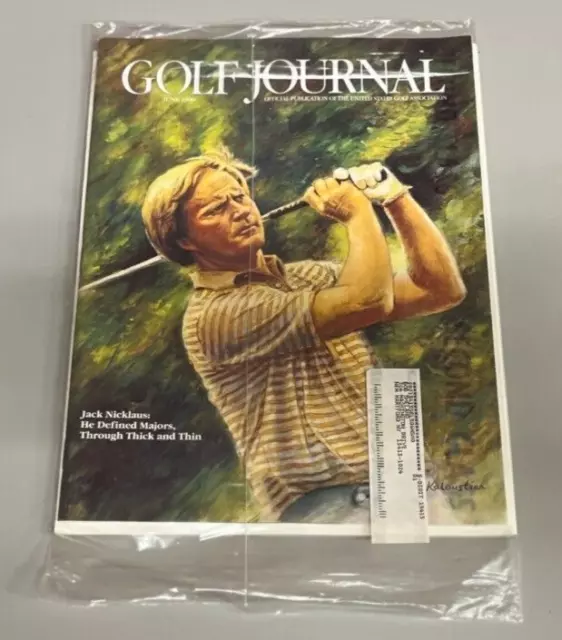Golf Journal Magazine Jack Nicklaus US Open, Masters PGA USGA June 1996 SEALED
£39.84 Buy It Now or Best Offer, Click to see shipping cost, eBay Money Back Guarantee
Seller: strangebeautifulvinylbooks ✉️ (2,436) 98.9%,
Location: Utica, New York, US,
Ships to: US & many other countries,
Item: 256200820975
Golf Journal Magazine Jack Nicklaus US Open, Masters PGA USGA June 1996 SEALED. Jack William Nicklaus (/ˈnɪkləsˌ ˈnɪkəl-/; born January 21, 1940), nicknamed The Golden Bear, is a retired American professional golfer and golf course designer.[2] He is widely considered to be either the greatest or one of the greatest golfers of all time.[3][4][5][6] He won 117 professional tournaments in his career. Over a quarter-century, he won a record 18 major championships, three more than second-placed Tiger Woods.[7] Nicklaus focused on the major championships—the Masters Tournament, U.S. Open, Open Championship and PGA Championship—and played a selective schedule of regular PGA Tour events. He competed in 164 major tournaments, more than any other player, and finished with 73 PGA Tour victories, third behind Sam Snead (82) and Woods (82). Nicklaus won the U.S. Amateur in 1959 and 1961 and finished second in the 1960 U.S. Open, two shots behind Arnold Palmer. Nicklaus turned professional at age 21 in 1961. He earned his first professional victory at the 1962 U.S. Open, defeating Palmer by three shots in a next-day 18-hole playoff and launching a rivalry between the golf superstars. In 1966, Nicklaus became the first player to win the Masters Tournament two years running; he also won The Open Championship, becoming at age 26 the youngest player to win all four golf majors.[8] He won another Open Championship in 1970.[8] Between 1971 and 1980, he won nine more major championships, overtook Bobby Jones's record of 13 majors, and became the first player to complete double and triple career grand slams. He won the 1986 Masters, his 18th and final major championship at age 46, the tournament's oldest winner. Nicklaus joined the Senior PGA Tour (now known as the PGA Tour Champions) when he became eligible in January 1990, and by April 1996 had won 10 tournaments, including eight major championships despite playing a very limited schedule. He continued to play at least some of the four regular Tour majors until 2005 when he made his final appearances at the Masters Tournament and The Open Championship. Today, Nicklaus heads Nicklaus Design, one of the world's largest golf course design and construction companies. Nicklaus runs an event on the PGA Tour, the Memorial Tournament, named after the annual honoring it bestows to individuals associated with the game of golf. Nicklaus's books vary from instructional to autobiographical, with his Golf My Way considered one of the best instructional golf books of all time; the video of the same name is the best-selling golf instructional to date. Early life and amateur golf pursuits Nicklaus was born on January 21, 1940, in Columbus, Ohio and grew up in the suburb of Upper Arlington. He is of German descent, the son of Helen (Schoener) and Charlie Nicklaus, a pharmacist who ran several businesses named Nicklaus Drug Store.[9] Charlie was a skilled all-round athlete who had played football for the Ohio State Buckeyes and had gone on to play semi-professional football under an assumed name for the Portsmouth Spartans (who later became the NFL's Detroit Lions). Charlie had also been a scratch golfer and local tennis champion in his youth.[10][11] Charlie Nicklaus died of pancreatic cancer at age fifty six.[12] Nicklaus attended Upper Arlington High School, whose nickname and mascot are coincidentally the Golden Bears. In Nicklaus's senior year, he was an honorable mention All-Ohio selection in basketball as a shooting guard, and he received some recruiting interest from college basketball programs, including Ohio State. During his youth, he also competed successfully in football, baseball, tennis, and track and field.[10][13] Nicklaus took up golf at the age of 10, scoring a 51 at Scioto Country Club for his first nine holes ever played. Charlie Nicklaus had joined Scioto that same year, returning to golf to help heal a volleyball injury. He was coached at Scioto by club pro Jack Grout, a Texas-developed contemporary of golf greats Byron Nelson and Ben Hogan; Grout had played quite successfully on the PGA Tour and would become Nicklaus's lifelong golf instructor.[10] Nicklaus overcame a mild case of polio as a 13-year-old.[14] Nicklaus won the first of five straight[15] Ohio State Junior titles at the age of 12. At 13, he broke 70 at Scioto Country Club for the first time, and became that year's youngest qualifier into the U.S. Junior Amateur, where he survived three match-play rounds. He had earned a handicap of +3 at age 13, the lowest in the Columbus area.[10][11] Nicklaus won the Tri-State High School Championship (Ohio/Kentucky/Indiana) at the age of 14 with a round of 68, and also recorded his first hole-in-one in tournament play the same year. At 15, Nicklaus shot a 66 at Scioto Country Club, which was the amateur course record, and qualified for his first U.S. Amateur. He won the Ohio Open in 1956 at age 16, highlighted by a phenomenal third round of 64, competing against professionals. In all, Nicklaus won 27 events in the Ohio area from age 10 to age 17. In 1957, Nicklaus won the International Jaycee Junior Golf Tournament, having lost the previous year in a playoff. Nicklaus also competed in his first of 44 consecutive U.S. Opens that year, but missed the cut. In 1958 at age 18, he competed in his first PGA Tour event, the Rubber City Open, at Akron, Ohio, tying for 12th place after being just one out of the lead at the 36-hole mark,[16] and made the cut in the U.S. Open, tying for 41st place. Nicklaus also won two Trans-Mississippi Amateurs – in 1958 at Prairie Dunes Country Club and 1959 at Woodhill Country Club, with final match victories of 9 & 8 and 3 & 2, respectively. Also in 1959, Nicklaus won the North and South Amateur at Pinehurst, North Carolina and competed in three additional PGA Tour events, with his best finish being another 12th place showing at the Buick Open. While attending Ohio State, he won the U.S. Amateur twice (1959, 1961), and an NCAA Championship (1961). In the 1959 U.S. Amateur, Nicklaus defeated two-time winner and defending champion Charles Coe 1-up in the final 36-hole match when he birdied the 18th hole.[17] This was significant not only because of Coe's proven ability as a player, but also because Nicklaus became the then-youngest champion in the modern era, second only to Robert A. Gardner, who won in 1909. In 1961, Nicklaus became the first player to win the individual title at the NCAA Championship and the U.S. Amateur in the same year. He was followed by Phil Mickelson (1990), Tiger Woods (1996), Ryan Moore (2004), and Bryson DeChambeau (2015). Nicklaus also won the NCAA Big Ten Conference Championship that year with a 72-hole aggregate of 283, while earlier claiming the Western Amateur in New Orleans. In his second and last U.S. Amateur win in 1961, Nicklaus convincingly defeated Dudley Wysong 8 & 6 at Pebble Beach in the 36-hole championship match. For the week, Nicklaus was 20 strokes under par, including 34 birdies and two eagles. At the 1960 U.S. Open, twenty-year-old Nicklaus shot a two-under-par 282, finishing in second place two strokes behind winner Arnold Palmer. This score remained the lowest ever by an amateur in the U.S. Open, until Viktor Hovland beat the record in 2019. Nicklaus played the final 36 holes with Ben Hogan, who later remarked that he had just played 36 holes with a kid who should have won by 10 shots. During the final 36 holes, Nicklaus was two-under-par; he had shot every round of the tournament at or below par and was the only entrant to do so. Nicklaus had led by two shots with six holes to play. In 1960, Nicklaus also tied for 13th in the Masters Tournament. He tied for fourth in the 1961 U.S. Open, three shots behind champion Gene Littler, having played the final 54 holes one under par. Each of these three major championship finishes designated Nicklaus as low amateur. However, Nicklaus's one-under-par 287 tied for seventh in the 1961 Masters Tournament, and was second that year only to Charles Coe's low amateur placing, when he tied for second with Arnold Palmer at seven-under-par 281, one shot behind champion Gary Player.[citation needed] Nicklaus represented the United States against Great Britain and Ireland on winning Walker Cup teams in both 1959 and 1961, decisively winning both of his matches in each contest. On the 1959 trip to Britain, he also made his only attempt at the British Amateur, the world's oldest international amateur event, at Royal St George's Golf Club, losing 4 & 3 in the quarterfinal round to fellow-American, Bill Hyndman.[10][18] He was also a member of the victorious 1960 U.S. Eisenhower Trophy team, winning the unofficial individual title by 13 shots over teammate Deane Beman with a four-round score of 269, a record which still stands; this score was 18 shots lower than Ben Hogan's earlier U.S. Open aggregate of 287 at the same site (which had, however, been scored under much tougher conditions).[10][19] For three straight years (1959–1961), Nicklaus was named the world's top amateur golfer by Golf Digest magazine. College studies and marriage Nicklaus attended Ohio State University from 1957 to 1961. He majored in pre-pharmacy and had good grades in his first three years; he intended to follow his father into pharmacy after graduation.[17][20] As his amateur golf achievements mounted, Nicklaus changed his mind on his career path; he switched programs to study insurance. At that stage, he planned to remain an amateur golfer and earn his living by selling insurance. For a time, he worked in the insurance field while he also attended college. He married Barbara Bash (b. 1940), who was a nursing student at Ohio State,[21] in July 1960,[22] and their first of five children, Jack Jr., was born in September 1961. The following month, Nicklaus was intent on becoming the first amateur to win the Masters.[23][24] In early November, he changed his mind and announced that he was turning professional in order to support his family.[25][26] He wound up a few course hours short of graduating from college. In a goodwill gesture, Ohio State granted him an honorary doctorate in 1972.[10] PGA Tour career Professional breakthrough: 1962–1963 Nicklaus officially turned professional in late 1961 and began his career on the PGA Tour the following year. He had previously debated the idea of remaining an amateur in order to further emulate his idol, Bobby Jones. However, Nicklaus realized that in order to be regarded as the best, he would have to compete in greater frequency against the best. Shortly after turning professional, Nicklaus's future agent, Mark McCormack, was interviewed by Melbourne Age writer Don Lawrence, who inquired about the American golf scene. When McCormack described Nicklaus, Lawrence referred to the "large, strong, and blond" player as "the Golden Bear", a nickname that would become synonymous with Nicklaus throughout his professional life. However, another possible origination of the name derives from the high school that Nicklaus attended in Upper Arlington, Ohio, which uses the mascot the Golden Bears for its sports teams. As mentioned above, Nicklaus played on several Golden Bears athletic teams, including captaining its 1956 state-champion golf squad, suggesting that McCormack may have adopted the name through Nicklaus's high school affiliation. Regardless, by 1963, the nickname had stuck.[citation needed] Nicklaus won his first PGA tournament in his 17th start. He and Arnold Palmer were tied for the lead at 1962 U.S. Open at Oakmont after Rounds 3 and 4 were played on Saturday. Nicklaus won the Sunday 18-hole playoff and earned $17,500 ($15,000 plus the $2,500 playoff bonus)—far behind Gary Woodland's $2,250,000 check for the 2019 U.S. Open—for his efforts. The galleries were more vocal in their support for Palmer—who had grown up in nearby Latrobe—but Nicklaus won the playoff by three shots (71 to 74). In 90 holes, Nicklaus had only one three-putt green. The U.S. Open victory made Nicklaus the reigning U.S. Open and U.S. Amateur champion. This major championship win was also his first PGA Tour win. In addition, Nicklaus (22) was the youngest U.S. Open champion since Bobby Jones won at age 21 in 1923, and remained the youngest winner until Jordan Spieth won the 2015 U.S. Open at age 21. (John McDermott is still the youngest winner of the U.S. Open at age 19 in 1911).[27] The U.S. Open win thrust Nicklaus into the national spotlight, and he was featured on the cover of Time magazine. This was also the beginning of the Nicklaus-Palmer rivalry, which attracted viewers to golf on television.[11] By the end of 1962, Nicklaus had won two more tournaments, which were back-to-back in the Seattle Open and Portland Open. In addition, he tied for third in his first appearance in the PGA Championship. Nicklaus completed the year with over $60,000 (equivalent to $580,462 in 2022) in prize money, made 26 of 26 cuts with 16 top-10 finishes, placed third on the PGA Tour money list, and was named Rookie of the Year. He also won the inaugural staging of the World Series of Golf, a select-field event for the year's major champions, and collected another $50,000 (equivalent to $483,718 in 2022) in unofficial money for that win.[15] In 1963, Nicklaus won two of the four majors—the Masters and the PGA Championship. These victories made him the then-youngest winner of the Masters and third-youngest winner of the PGA Championship, and each win came in just his second year as a professional. Along with three other wins including the Tournament of Champions, he placed second to Arnold Palmer on the PGA Tour money list with just over $100,000 (equivalent to $955,870 in 2022).[15] He also teamed with Palmer to win the Canada Cup (now the World Cup of Golf) in France, representing the United States (this event was shortened to 63 holes due to heavy fog). Nicklaus also finished as low individual scorer for that event.[citation needed] Business success Nicklaus's meteoric rise to fame immediately after turning professional enabled opportunities for him to earn significant endorsement income.[28] These business opportunities were facilitated by Mark McCormack, who also managed Palmer and Gary Player. Golf was growing rapidly in popularity and media coverage during the early 1960s, led by the performances of these three star players. This association was the start of the agency that became known as International Management Group, and IMG, after building a base in golf management, eventually expanded into other sports. The Palmer-Nicklaus-Player rivalry developed into the so-called "Big Three" of Golf. In the early 1960s, McCormack set up a series of televised golf matches around the world among the three stars, known as Big Three Golf. In the early 1970s, Nicklaus left IMG to set up his own management agency, Golden Bear Inc.[11] Nicklaus also signed a contract with Eastern Airlines. He could be seen on TV saying, "If you play golf, Eastern is your airline."[29] Continued excellence: 1964–1967 Despite winning no majors in 1964 (he had three runner-up finishes), Nicklaus led the PGA Tour money list for the first time in his career by a slim margin of $81.13 over Palmer. At The Open Championship at St Andrews, Nicklaus set a new record for the lowest score in the final 36 holes with 66–68 in high winds (the first time in the championship's history that 70 had been broken in each of the last two rounds). This was not enough, however, to win the event; Nicklaus placed second to Tony Lema.[15] Nicklaus also set a record for the lowest final-round score in the PGA Championship with a 64 (since broken by Brad Faxon in 1995 with a 63), but fell three shots short of champion Bobby Nichols and his record-setting score of 271. In 31 official worldwide events in 1964, Nicklaus achieved six victories, seven runners-up, placed in the top five 21 times, the top-10 21 times, and had only one missed cut. Nicklaus and Palmer also defended their team title at the World Cup in Hawaii, with Nicklaus again finishing as low individual scorer. When Nicklaus won the Masters Tournament in 1965 and 1966, he became the tournament's first back-to-back winner and the youngest two-time and three-time winner. He broke Ben Hogan's 72-hole scoring record of 274 in 1953 when he compiled a new aggregate of 271 in the 1965 Masters. This record was tied by Raymond Floyd in 1976 and lasted until Tiger Woods shot 270 in 1997, which was a 72-hole record that was subsequently tied by Jordan Spieth in 2015. When Woods and Spieth shot 270, the scores were achieved with significantly improved golf equipment on essentially the same-length golf course over which Nicklaus and Floyd shot 271. During the 1965 tournament, Nicklaus hit 62 of 72 greens in regulation and had 123 putts, inclusive of just one three-putt green. This was good enough to win by nine shots over Arnold Palmer and Gary Player; this margin of victory was a tournament record that would last for 32 years until Woods won by 12 shots in 1997. The week's performance was highlighted by a third-round 64 that consisted of eight birdies and no bogeys. It was of this round that Nicklaus said, "I had never before and have never since played quite as fine a complete round of golf in a major championship as I did in the third round of the 1965 Masters." This round tied Lloyd Mangrum's record set at Augusta National in 1940 and remained in place until Nick Price shot 63 during the third round in 1986. It was at this time that Bobby Jones stated Nicklaus played a game with which he was unfamiliar; Jones called Nicklaus's result "the greatest performance in all of golfing history". After Nicklaus's record performance at Augusta National in 1965, the course underwent some minor changes to make it tougher. These modifications and the difficult weather in the 1966 tournament did not deter Nicklaus. He successfully defended his title with an even-par aggregate of 288, 17 shots higher. He won in an 18-hole playoff over Gay Brewer (Brewer had three-putted the 18th green to force the playoff but he redeemed himself the following year by winning the tournament) and Tommy Jacobs by shooting a two-under-par 70. Nicklaus led the PGA Tour money list again in 1965 by a healthy margin over Tony Lema. Nicklaus and Lema formed the U.S. team for the World Cup, held in Madrid, Spain,[10] but could not defend the title, as South Africa won. In all, Nicklaus competed in 28 official worldwide events in 1965, accumulating five victories, seven runners-up, 19 top-5 finishes, 23 top-10 finishes, and zero missed cuts. In 1966, Nicklaus also won The Open Championship at Muirfield in Scotland under difficult weather conditions; he used his driver just 17 times because of very heavy rough. This was the only major he had failed to win up to that point. This win made him the youngest player, age 26 (his fifth year on Tour), and the only one after Gene Sarazen, Ben Hogan, and Gary Player (until Tiger Woods at age 24 in 2000, also during his fifth year on Tour) to win all four major championships, now known as the Career Grand Slam. Nicklaus eventually accomplished the double career grand slam in 1971 and the triple career grand slam in 1978, winning all four majors two and three times, respectively. Nicklaus was part of another title for the U.S. in the World Cup in Japan. Nicklaus concluded 1966 playing 22 official worldwide events, with four victories, four runners-up, 14 top-5 finishes, 16 top-10 finishes, and zero missed cuts. In 1967, Nicklaus won the U.S. Open for a second time. The tournament was held at Baltusrol, and he broke Hogan's 72-hole record by one shot with a 275 when he birdied the par 5 18th hole.[15] During the four rounds, Nicklaus hit 61 of 72 greens in regulation. Nicklaus finished this record win with a dramatic 238-yard 1-iron shot, uphill into a breeze and light rain, to the 72nd green (an approximate 260-yard equivalent) and holing out a 22-foot (6.7 m) birdie putt to close out a final nine of 30 and final round of 65 to shoot 275, four shots better than runner-up Arnold Palmer. Nicklaus and Palmer were the only two players to break par for the week. Sports Illustrated ran a cover photo of Nicklaus throwing his leg high in the air with the headline, "Nicklaus Breaks the Open Record".[30] He also finished runner up in The Open Championship and third in the PGA Championship, one shot out of a playoff between Don January and Don Massengale. In 1967, Nicklaus led the PGA Tour money list for the third time. Later that year, Nicklaus and Palmer teamed up for a 13-shot wire-to-wire World Cup victory in Mexico City. Nicklaus competed in 24 official worldwide events in 1967, with five victories, four runners-up, 14 top-5 finishes, 16 top-10 finishes, and one missed cut. For most of his professional career, Nicklaus employed Angelo Argea as his caddie. Career downturn (1968–1970) After Nicklaus won the 1967 U.S. Open in record-breaking fashion, he did not win another major championship until the 1970 Open Championship at the Old Course at St Andrews. Moreover, his highest finish on the Tour money list for the years 1968–70 was second; his lowest was fourth, his worst ranking on the list since turning professional. However, his fourth-place ranking in 1970 would have been elevated to second if The Open Championship winnings were included during that period in the official PGA Tour money list, as they are today. Nicklaus finished runner-up in both the 1968 U.S. Open (to new rival Lee Trevino) and the 1968 Open Championship (to old rival Gary Player). Nicklaus made his inaugural appearance in the 1969 Ryder Cup at age 29; eligibility rules at the time required a minimum five-year PGA Tour membership before points could be counted for team qualification; rules have been relaxed significantly since.[31] In the 1969 Ryder Cup, the entire competition came down to the anchor singles match between Nicklaus and Tony Jacklin. At the par-5 17th hole with Nicklaus leading by the score of 1 up, Jacklin made a 35-foot (11 m) eagle putt to square the match. With the entire competition outcome riding on this match, Nicklaus made a five-foot par putt on the last hole before controversially conceding Jacklin's par putt, ensuring that this game, and the overall match, ended in a tie.[32] Afterwards United States team Captain Sam Snead said "This is the greatest golf match you have ever seen in England."[33] During this period, Nicklaus's physical condition declined somewhat; he put on some excess weight, which affected his stamina. Following the Ryder Cup, he significantly improved his condition in the fall of 1969 by losing 25 pounds (11 kg) in one month,[34] and his game started to return to top form.[31] In February 1970, Nicklaus's father, Charlie Nicklaus, died of pancreatic cancer at age 56. Five months after this, Nicklaus won the 1970 Open Championship under difficult scoring conditions in Scotland where the wind howled up to 56 miles per hour (90 km/h), defeating fellow American Doug Sanders in an 18-hole playoff round in emotional fashion. On the 18th hole of the playoff, Nicklaus drove about 380 yards, through the par-4 green with a three-wood, and was forced to pitch back to the hole. His eagle pitch finished approximately eight feet short of the hole. Nicklaus threw his putter into the air after sinking the winning putt, as he was thrilled to have won the Open at the home of golf, St Andrews.[35] He describes this period in his life: I was playing good golf, but it really wasn't that big a deal to me one way or the other. And then my father died and I sort of realized that he had certainly lived his life through my golf game. I really hadn't probably given him the best of that. So I sort of got myself back to work. So '70 was an emotional one for me from that standpoint. ... It was a big boost.[36] Nicklaus also went on to capture the Piccadilly World Match Play Championship in 1970 with a 2 & 1 win over Lee Trevino in the championship match. In all for the year, Nicklaus competed in 23 official worldwide events, won four, placed in the top-5 10 times, and the top-10 in 14. Although Nicklaus's performance had declined somewhat during this period, he was still ranked as the No. 1 player in the world, for 10 straight years, beginning in 1968, on the McCormack's World Golf Rankings, which were introduced that year by sports agent Mark McCormack. These rankings, the first attempt to take into account results from professional tours around the world, were not official during that era, but they eventually evolved into the current Official World Golf Ranking, starting in 1986. Resurgence (1971–1977) With his victory in the 1971 PGA Championship, Nicklaus became the first golfer to win all four majors twice.[15] In this championship, Nicklaus was the only player to break 70 consecutively in the first two rounds under windy conditions; he finished at seven-under-par 281. Nicklaus finished second twice and fifth in the remaining three major championships for the year. While he finished tied for second in the Masters with Johnny Miller, Nicklaus made a big enough impression on a young Nick Faldo (watching on TV in England) in order for Faldo to take up the game seriously. By the end of 1971, Nicklaus had won four additional PGA tournaments including the Tournament of Champions by eight shots and the National Team Championship with Arnold Palmer by six shots. With $244,490 in official PGA Tour earnings, Nicklaus established a new single-season money record during the year. Nicklaus also claimed his third World Cup individual title in 1971, with help from a 63 in the third round. He also won the team competition with partner Lee Trevino by 12 shots. The year 1971 brought Nicklaus a victory in the Australian Dunlop International as well, punctuated by a course record 62 (his career-low score in competition; one of three) in the second round. For the record, Nicklaus played in 23 official worldwide events in 1971, won eight, had 17 top-5 finishes, 20 top-10 finishes, and compiled a 5–1–0 record in that year's Ryder Cup competition. Nicklaus won the first two major championships of 1972 by three shots each in wire-to-wire fashion. He won the Masters and the U.S. Open, creating talk of a calendar-year Grand Slam. Nicklaus opened with a four-under-par 68 at Augusta National and never looked back. He was the only player under par for the week as he and the field battled difficult scoring conditions. In the U.S. Open at Pebble Beach again under severe scoring conditions, Nicklaus struck a one-iron on the 218-yard par-three 17th hole during the final round into a stiff, gusty ocean breeze that hit the flagstick and ended up three inches from the cup. The U.S. Open was Nicklaus's 13th career major and tied him with Bobby Jones for career majors (although a different group of tournaments had been considered majors in Jones's time). This victory was also Nicklaus's 11th professional major, tying him with Walter Hagen, and made him the first player to win the U.S. Amateur and U.S. Open championships on the same golf course. During the 1972 PGA Tour season, Nicklaus won seven tournaments and was runner-up in three events. However, Nicklaus did not win the Grand Slam that year, as Lee Trevino repeated as the Open Championship winner (Nicklaus finished second, one shot behind), and Gary Player prevailed in the PGA Championship. Nicklaus closed out this remarkable year with a second of three consecutive Walt Disney World Golf Classic victories by shooting a 21-under-par 267 to win by nine shots. He concluded 1972 by competing in 20 official worldwide events winning seven, placing second in four, and compiling 15 top-10 finishes. Nicklaus in 1973 Bobby Jones's record of majors was soon broken when Nicklaus won the PGA Championship in August 1973 by four shots over Bruce Crampton for his 12th professional major (surpassing Hagen's mark of 11) and 14th overall when using the old-style configuration of Jones's day. In that year he won another six tournaments. When he won the 1973 Ohio King's Island Open, he became the first PGA Tour player to win a Tour event on a course that he designed himself. The PGA Player of the Year was awarded to Nicklaus for the third time, and the second year in a row. Nicklaus was also the first player to win over $300,000.00 in official money for a single season in 1972 at $320,542; he eclipsed that threshold again the following year with $308,362. The former total was $106,137 more than runner-up Lee Trevino. The latter total for the year 1973 catapulted Nicklaus over the $2 million career PGA Tour earnings mark, making him the first player to reach that milestone. Nicklaus teamed with Johnny Miller for another team title in the World Cup of Golf, held in Spain. For the year, Nicklaus competed in 20 official worldwide events and claimed seven victories, 14 top-five finishes, 17 top-10s, and compiled a 4–1–1 record in that year's Ryder Cup competition. Nicklaus's failure to win a major in 1974 was somewhat offset when he won the inaugural Tournament Players Championship and was named one of the 13 original inductees into the World Golf Hall of Fame.[37] Nicklaus said this honor was a "nice memento" after a "disappointing season".[38] Although he had no major championship victories in 1974, Nicklaus still achieved four top-10 finishes in the four events, three of which were in the top four, and placed second on the official money list behind Johnny Miller. While less than a stellar year, Nicklaus was able to claim two victories and 13 top-10 finishes in 20 official worldwide events. Nicklaus started off well in 1975: he won the Doral-Eastern Open, the Sea Pines Heritage Classic, and the Masters in consecutive starts. His Masters win was his fifth, a record he was to break eleven years later. In this tournament, Nicklaus's 40-foot (12 m) birdie putt on the 16th hole of the final round was a key in his victory over Tom Weiskopf and Johnny Miller in a riveting final-round battle. He also won the PGA Championship in August at Firestone Country Club by two shots over Bruce Crampton for his fourth win. Having won the Masters and PGA Championship, Nicklaus missed a playoff for the U.S. Open by two shots and a playoff for Open Championship by one shot. His performance in 1975 resulted in his being named PGA Player of the Year for the fourth time, tying Ben Hogan, and he was also named ABC's Wide World of Sports Athlete of the Year. Nicklaus also captured his fourth Australian Open during the year. The year 1975 yielded Nicklaus six wins, 12 top-5 finishes, and 16 top-10 finishes in 18 official worldwide events. Nicklaus placed first on the PGA Tour money list again in 1976, despite competing in only 16 events, winning just two (Tournament Players Championship and World Series of Golf) – neither of them majors – and playing what he called "hang-back-and-hope golf".[39] The 1976 Tournament Players Championship saw Nicklaus set a championship record of 19-under-par 269 for his second win in this event which remained in place until Greg Norman's 24-under-par 264 assault in 1994. He also won the PGA Player of the Year award for a record fifth time. Between 1972 and 1976 the only time he failed to win this award was 1974. The year 1976 also concluded an official streak of 105 consecutive cuts made on the PGA Tour (ending at the World Open), which began for Nicklaus in 1970. At the time this streak was second only to Byron Nelson's record of 113. The following year, 1977, was also majorless for Nicklaus, but he did achieve four top-10 finishes in the four events inclusive of two second and one third-place finish – this being one shot out of the PGA Championship playoff between Lanny Wadkins and Gene Littler. Despite a brilliant final round 66 at the Masters, he finished second by two shots to Tom Watson. But his subsequent second-place finish behind Watson at the Open Championship at Turnberry created headlines around the world. In a one-on-one battle dubbed the "Duel in the Sun", Nicklaus shot 65–66 in the final two rounds, only to be beaten by Watson, who scored 65-65. This event marked the first time 270 was broken in a major championship, and the third-place finisher Hubert Green scored 279. Nicklaus would later say: There are those in golf who would argue into next month that the final two rounds of the 1977 British Open were the greatest head-to-head golf match ever played. Not having been around for the first five hundred or so years of the game, I'm not qualified to speak on such matters. What's for sure, however, is that it was the most thrilling one-on-one battle of my career.[40] In 1977, Nicklaus won his 63rd tour event, passing Ben Hogan to take second place on the career wins list, behind only Sam Snead (subsequently Hogan's official career PGA Tour victory total was put at 64, including his 1953 Open Championship which was retroactively deemed an official PGA Tour event). He also became the first player to amass over $3 million in official PGA Tour earnings. The year also saw Nicklaus win for the first time his own Memorial Tournament, where he described the victory as the most emotional moment of his entire career, and nearly decided to retire from competitive golf. Proposes Ryder Cup modifications During the 1977 Ryder Cup at Royal Lytham & St Annes, Nicklaus approached the PGA of Great Britain about the urgency to improve the competitive level of the contest. The issue had been discussed earlier the same day by both past PGA of America President Henry Poe and British PGA President Lord Derby. Nicklaus pitched his ideas, adding: "It is vital to widen the selection procedures if the Ryder Cup is to continue to enjoy its past prestige." The changes in team selection procedure were approved by descendants of the Samuel Ryder family, along with The PGA of America. The major change was expanding selection procedures to include players from the European Tournament Players' Division, and "that European Members be entitled to play on the team". This meant that professional players on the European Tournament Players' Division, the forerunner to the European Tour we have today, from continental Europe would be eligible to play in the Ryder Cup. Achieves triple career grand slam (1978) When Nicklaus won the 1978 Open Championship at St. Andrews, he became the only player to win each major championship three times.[8] This record was tied by Tiger Woods when he won the 2008 U.S. Open. Nicklaus and Woods are the only two players to win three "Career Grand Slams". Nicklaus considered his performance in the 1978 Open as the finest four days of tee-to-green golf he had ever produced, and was most proud that the win came at St. Andrews, his favorite place to play golf. The victory was also his most emotional to date. Nicklaus won three other tournaments on the PGA Tour in 1978. One of those wins came in the Jackie Gleason-Inverrary Classic, where he played the final 36 holes 13 under par and scored five consecutive birdies over the closing holes in the final round.[41] He also won his third Tournament Players Championship in difficult weather conditions; he had won three of the first five stagings of that tournament, and he remains the championship's only three-time winner. He was named Sportsman of the Year by Sports Illustrated. The year 1978 also marked Nicklaus's sixth and final Australian Open victory. Short slump and revamping In 1979, Nicklaus suffered a lapse of form and did not win a tournament. This was the first year in his professional career in which he failed to win a PGA Tour event. He had only one runner-up finish, plus a tied-for-second with Ben Crenshaw behind 22-year-old Seve Ballesteros at The Open Championship. He would not win another tournament until June 1980. Previously, Nicklaus won at least one PGA Tour tournament per year (a record he shares with Arnold Palmer), and a minimum of two tournaments per year for 17 consecutive years, and this is another PGA Tour record. During the offseason, Nicklaus addressed two problems that had hurt his performance. His lifelong teacher Jack Grout noticed that he had become much too upright with his full swing, which caused a steep, oblique approach into the ball, compared with a more direct hit; this was corrected by slightly flattening his backswing. Then Nicklaus's short game, never a career strength, was further developed with the help of Phil Rodgers, a friend for more than 20 years, and earlier PGA Tour rival, who had become a fine coach. Rodgers lived for a time at the Nicklaus home while this work was going on.[31] Wins fourth U.S. Open, fifth PGA Championship (1980) In 1980, Nicklaus recorded only four top-10 finishes in 14 events, but two of these were record-setting victories in majors (the U.S. Open and the PGA Championship); the other two were a tie for fourth in The Open Championship and a runner-up finish in the Doral-Eastern Open to Raymond Floyd via his chip-in birdie on the second hole of a sudden-death playoff. Nicklaus set a new scoring record for the 1980 U.S. Open with an aggregate of 272, eclipsing his earlier record of 275 from 1967 over the same golf course. That record, while since having been tied by three other players, stood until Rory McIlroy's 268 in winning the 2011 U.S. Open. This was Nicklaus's second major win at Baltusrol Golf Club. Nicklaus opened with a record-tying 63 in round one and fought off his playing partner of all four rounds, 1978 Colgate World Match Play Championship winner, Isao Aoki. Entering the final round, Aoki had caught Nicklaus after three consecutive rounds of 68, but over the course of the last day, Nicklaus pulled away by two shots. Each player birdied the final two holes for a dramatic finish. Aoki's aggregate of 274 was the lowest score for a U.S. Open runner-up. Nicklaus's win was his fourth and final victory in the championship, tying him with Willie Anderson, Bobby Jones, and Ben Hogan. Nicklaus referred to this win as "by far the most emotional and warmest reaction to any of my wins in my own country". In the 1980 PGA Championship, Nicklaus set another record when he won the tournament by seven shots over Andy Bean at the Oak Hill Country Club; the win was largely due to exceptional putting. Nicklaus shot an even-par 70 in the first round. This was followed by three successive rounds in the 60s over the difficult course, and he was the only player to break par for 72 holes. For the week, the field averaged 74.60 strokes while Nicklaus averaged 68.50. This was Nicklaus's fifth and final victory in the PGA Championship, which elevated him to record-holder for the most wins in the stroke-play era, and which tied him with Walter Hagen for the most wins overall, since Hagen's victories were all during the match-play era. Nicklaus's seven-shot winning margin remained the largest for the stroke-play version of the championship until Rory McIlroy's 2012 victory. This victory also made Nicklaus the only player since Gene Sarazen in 1922 and Ben Hogan in 1948 to win the U.S. Open and PGA Championship the same year (subsequently equaled by Tiger Woods in 2000 and Brooks Koepka in 2018). 1981–1985 Between 1981 and 1985, Nicklaus accumulated seven more top-10 placements in major championships, including three runner-up performances. He won only twice on the PGA Tour during this period, the Colonial National Invitation in 1982 and his own Memorial Tournament in 1984 for the second time, defeating Andy Bean in a sudden-death playoff to become the tournament's first two-time champion. In 1983, Nicklaus closed out the PGA Championship and World Series of Golf with brilliant final rounds in the mid-60s, and passed many players to move into contention, but finished runner-up in each to Player of the Year Hal Sutton and Nick Price, respectively, who dominated the tournaments from start to finish. Despite not winning a PGA Tour event in 1983, Nicklaus finished 10th on the PGA Tour money list, and passed a significant milestone by becoming the first player to eclipse the $4 million level in career earnings. In 1985, Nicklaus finished second to Curtis Strange in the Canadian Open, which marked his seventh and final second-place finish in that tournament; this is a record for that event. These seven runner-up finishes came over the course of 21 events—or one second-place finish for every three tournaments played—and does not include a third-place finish in 1983, one shot out of the playoff between John Cook and Johnny Miller. During the five-year period between 1981 and 1985, the Ryder Cup matches provided Nicklaus with two bright spots. He completed his competition as a player in style by contributing a perfect 4–0–0 record (inclusive of a 5 & 3 anchor singles match win over Eamonn Darcy) in 1981, and captained the United States team in 1983 to a one-point win over Europe. Wins sixth Masters at age 46 (1986) In 1986, Nicklaus capped his victories in major championships by winning his sixth Masters title under challenging circumstances; he posted a six-under-par 30 on the back nine for a final round of seven-under-par 65. At the 17th hole, Nicklaus hit his second shot to within 18 feet (5.5 m) and rolled it in for birdie; he raised his putter in celebration and completed an eagle-birdie-birdie run. Nicklaus made a solid par-4 at the 72nd hole, and waited for the succeeding players, several of whom (Tom Kite, Greg Norman) were still in contention, to fall short. Nicklaus played the final ten holes seven under par, with six birdies and an eagle. At age 46, Nicklaus became the oldest Masters winner in history, a record that still stands. On the feat, sports columnist Thomas Boswell remarked, Some things cannot possibly happen, because they are both too improbable and too perfect. The U.S. hockey team cannot beat the Russians in the 1980 Olympics. Jack Nicklaus cannot shoot 65 to win The Masters at age 46. Nothing else comes immediately to mind.[42] This victory was his 18th and final major title. This victory was to be his last in his long career on the PGA Tour, and was described at the time by noted golf historian and writer Herbert Warren Wind as "nothing less than the most important accomplishment in golf since Bobby Jones's Grand Slam in 1930". Author Ken Bowden wrote after the win: There have been prettier swingers of the club than Jack Nicklaus. There may have been better ball-strikers than Jack Nicklaus. There have definitely been better short-game exponents than Jack Nicklaus. Other golfers have putted as well as Jack Nicklaus. There may have been golfers as dedicated and fiercely competitive as Jack Nicklaus. But no individual has been able to develop, combine and sustain all of the complex physical skills and the immense mental and emotional resources the game demands at its highest level as well as Jack Nicklaus has for as long as he has. At the 1998 Masters, Nicklaus was 58 when he tied for sixth place despite being hampered by an ever-increasing painful left hip.[43] Nicklaus's five-under-par 283 was the lowest 72-hole score in the Masters by a player older than fifty, until Phil Mickelson finished eight-under-par 280 in 2023 at age 52. During the course of a 25-year span (1962–1986), Nicklaus won 18 major championships and finished second 18 times (excluding the second-place finish at the 1960 U.S. Open as an amateur). He also placed third nine times and fourth seven times in this span and was one stroke out of a playoff on five of those occasions (1963 Open Championship, 1967 PGA Championship, 1975 Open Championship, 1977 PGA Championship, and 1979 Masters Tournament). His total span of 73 top-10 finishes over 39 years (1960–1998) is a record in total number as well as longevity among the four major championships and encompassed his tenure from an amateur through the majority of his Champions Tour career.
- Condition: New
- Publication Month: June
- Publication Year: 1996
- Format: Physical
- Language: English
- Publication Frequency: Special Issue
- Publication Name: Golf Journal
- Features: Collector's Edition, Illustrated
- Genre: Sports
- Subscription: No
- Topic: Sports & Outdoors
- Country/Region of Manufacture: United States
- Modified Item: No
PicClick Insights - Golf Journal Magazine Jack Nicklaus US Open, Masters PGA USGA June 1996 SEALED PicClick Exclusive
- Popularity - 0 watchers, 0.0 new watchers per day, 249 days for sale on eBay. 0 sold, 1 available.
- Best Price -
- Seller - 2,436+ items sold. 1.1% negative feedback. Great seller with very good positive feedback and over 50 ratings.
People Also Loved PicClick Exclusive

Golf Magazine 1996 1997 Year Lot of 11 Rick Smith Tiger Woods OPEN Jack NICKLAUS
£38.26 Buy It Now 9d 6h
Vintage August 1980 Golf Journal Magazine With Jack Nicklaus USGA
£10.32 Buy It Now 4d 3h
April 27, 1973 Golf World Magazine: JACK NICKLAUS Wins Tournament of Champions
£4.77 0 Bids 2d 6h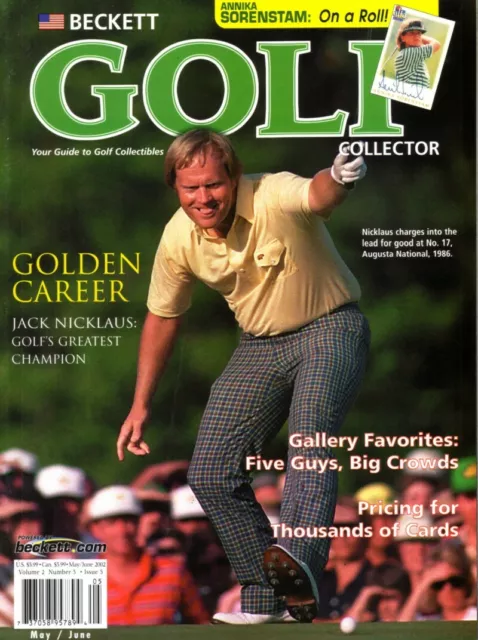
Jack Nicklaus May 2002 Beckett Golf Collector magazine issue 1986 Masters cover
£13.28 Buy It Now 16d 23h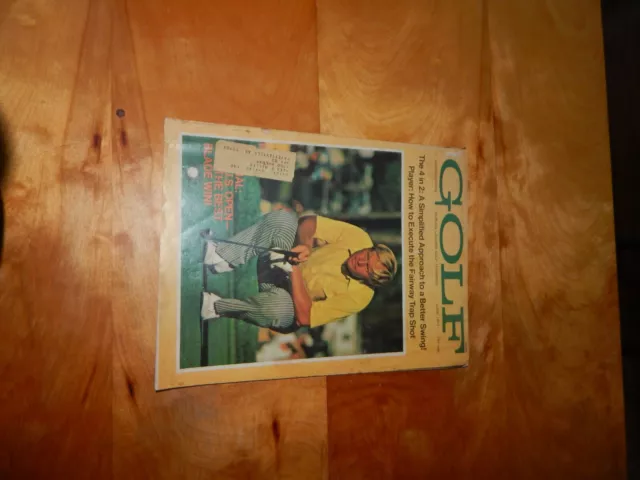
Vintage Golf Magazine June 1971 Jack Nicklaus Incorporating Golfing Us Open
£11.95 Buy It Now 22d 3h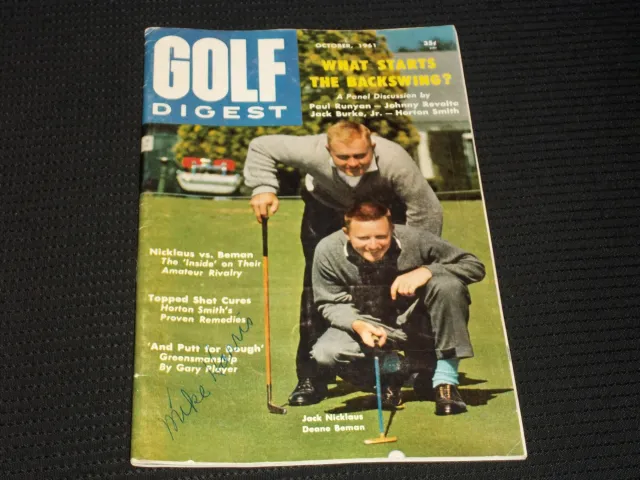
1961 October Golf Digest Magazine - Deane Beman & Jack Nicklaus Cover - E 5458
£23.91 Buy It Now 28d 23h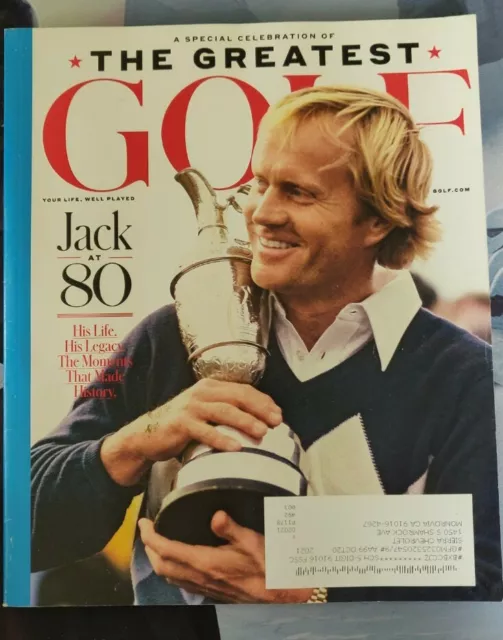
JACK NICKLAUS GOLF MAGAZINE, MASTERS, GOLF, PGA, Tiger Woods
£7.96 Buy It Now 3d 9h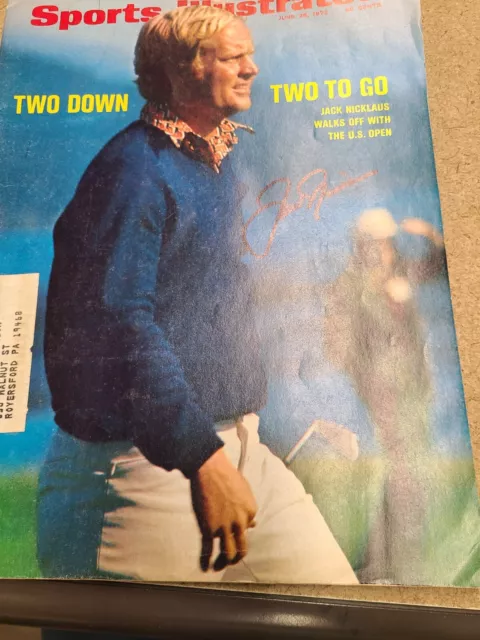
1972 JUNE 26 SPORTS ILLUSTRATED MAGAZINE - JACK NICKLAUS Autographed
£67.71 Buy It Now 14d 21h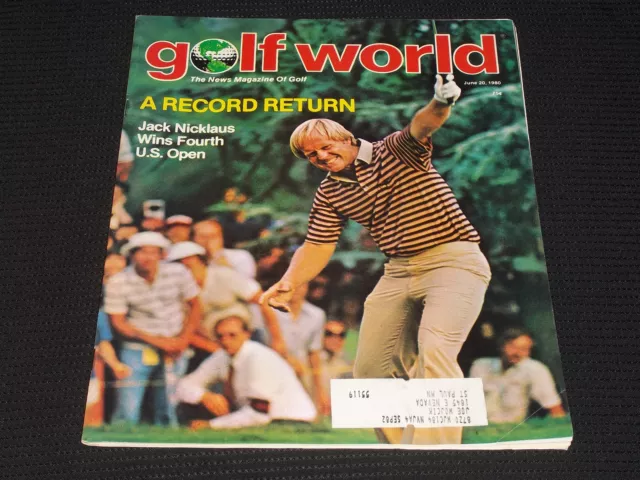
1980 June 20 Golf World Magazine - Jack Nicklaus Front Cover - E 6997
£35.87 Buy It Now 10d 17h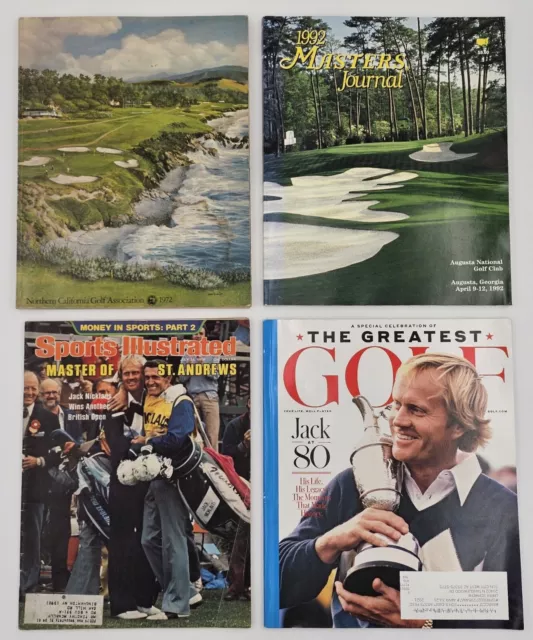
Sports Illustrated JACK NICKLAUS Wins Brtish Open & Golf Magazine Jack At 80
£11.96 Buy It Now 21d 3h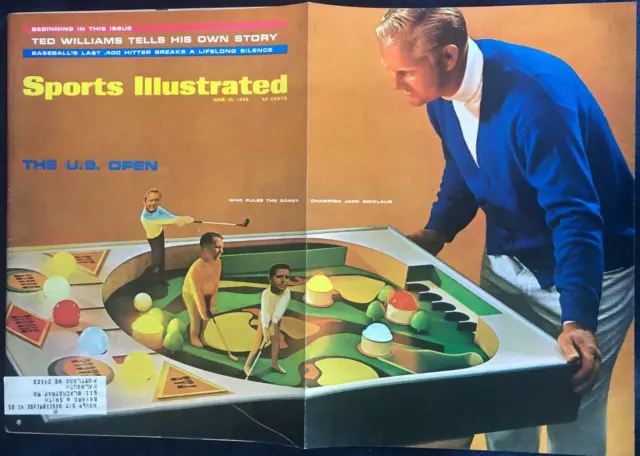
1968 Sports Illustrated: Jack Nicklaus/Arnold Palmer US Open Golf Fold Out Cover
£6.77 Buy It Now 21d 20h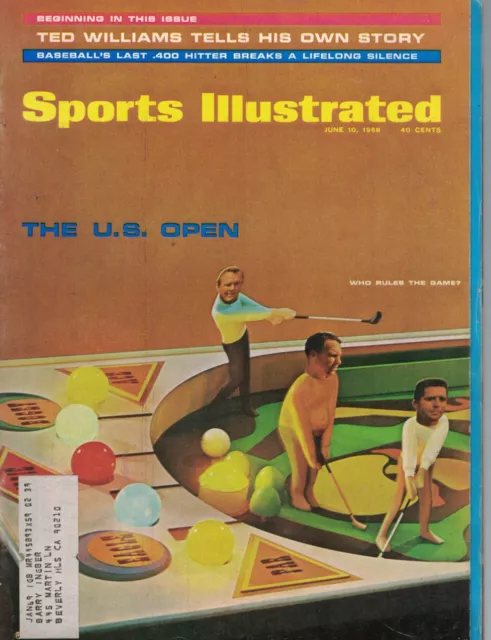
1968 Sports Illustrated June 10 - U.S. Open Golf; Ted Williams; Jack Nicklaus
£9.25 Buy It Now 13d 20h
1987 June 12 Golf World Magazine - Jack Nicklaus Front Cover - E 5509A
£39.85 Buy It Now 28d 23h
4-Golf Magazine AG DFW New Jordan Spieth Masters Usga PGA British Open Ryder Cup
£23.11 Buy It Now 29d 4h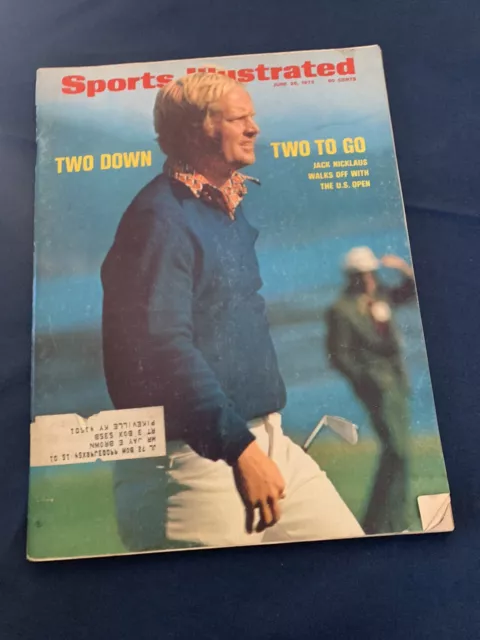
June 26 1972 Sports Illustrated Magazine ~ Jack Nicklaus Golf U.S. Open
£6.77 Buy It Now 28d 17h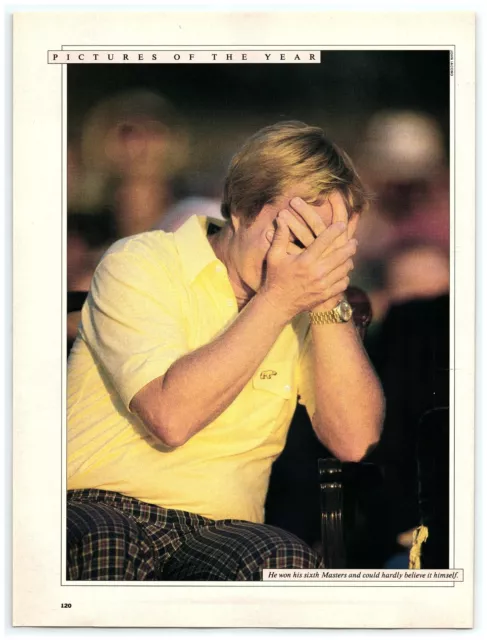
Jack Nicklaus Cries After Winning Sixth PGA Golf Masters magazine CLIPPING photo
£9.17 Buy It Now 23d 1h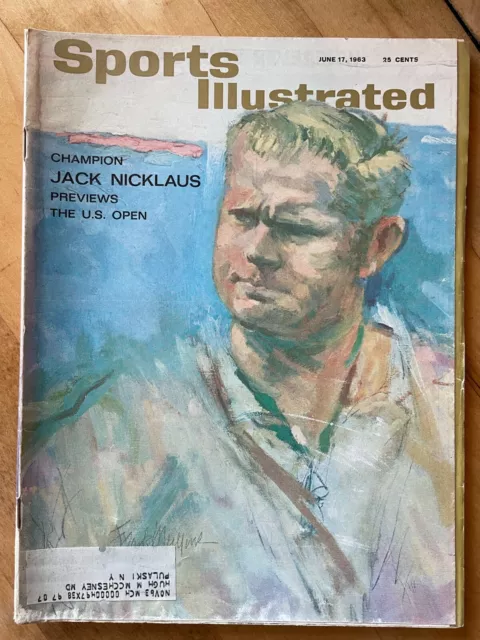
Sports Illustrated - June 17, 1963 - Jack Nicklaus Previews the US Open
£7.96 Buy It Now 4d 17h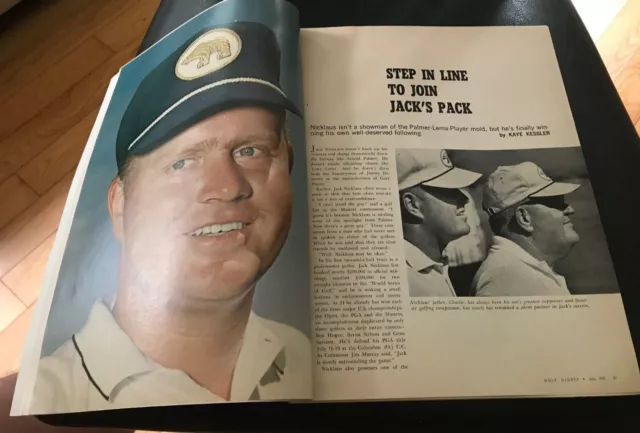
July 1964 Golf Digest Magazine, Jack Nicklaus, Gary Player & Bob Charles
£19.93 Buy It Now 9d 18h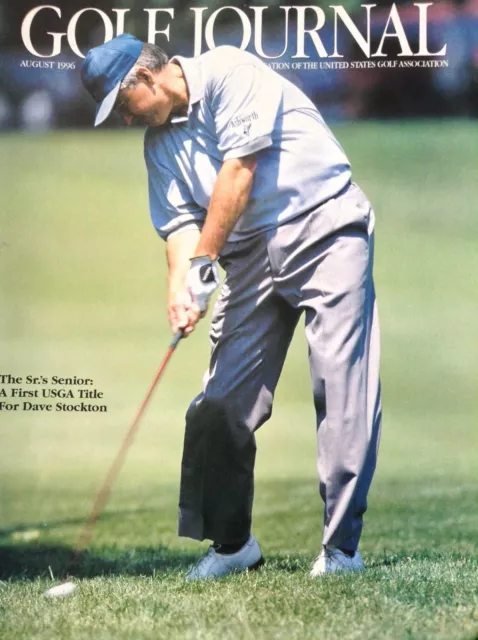
Golf Journal Magazine The Sr.'s Senior USGA Title August 1996 120618nonrh
£7.68 Buy It Now 13d 0h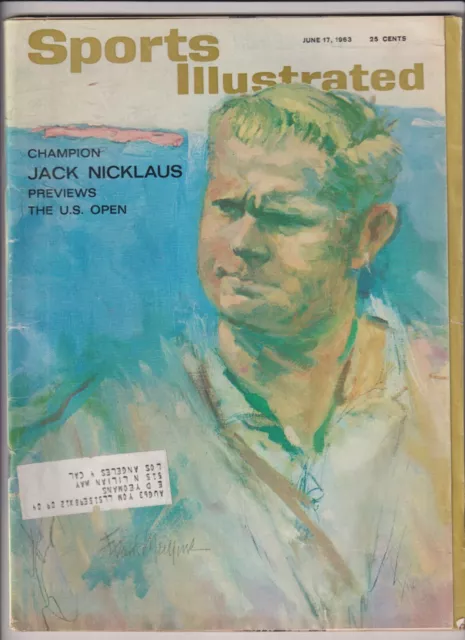
Sports Illustrated Jack Nicklaus The US Open June 17, 1963 021120nonr
£11.85 Buy It Now 19d 22h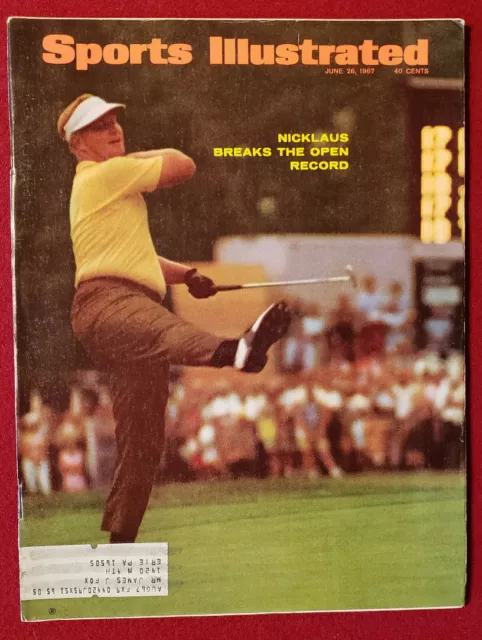
1967 PGA GOLF JACK NICKLAUS BREAKS U.S. OPEN RECORD Sports Illustrated
£5.54 Buy It Now 22d 18h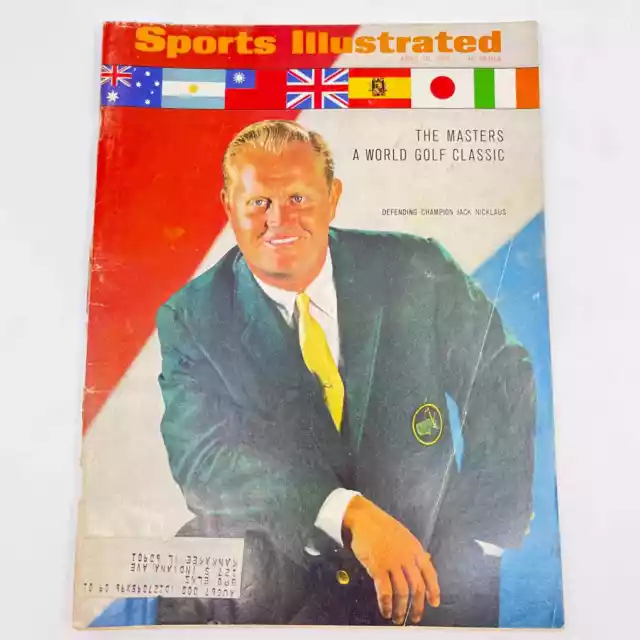
1967 April 10 Sports Illustrated Magazine Golf Jack Nicklaus The Masters TE8
£6.77 Buy It Now 17d 20h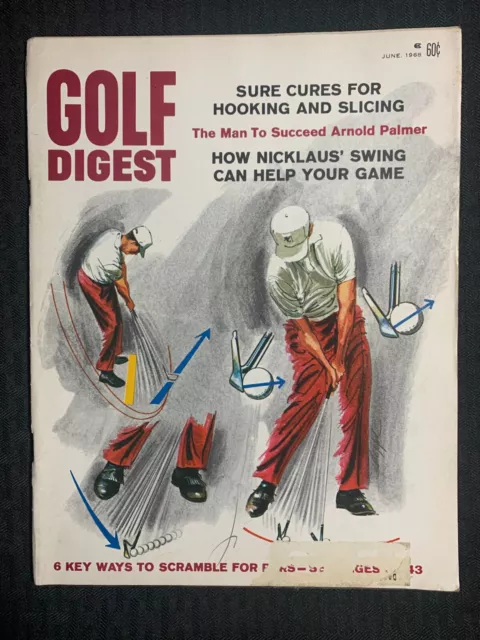
1968 June GOLF DIGEST Magazine G/VG 3.0 Jack Nicklaus
£12.15 Buy It Now 19d 20h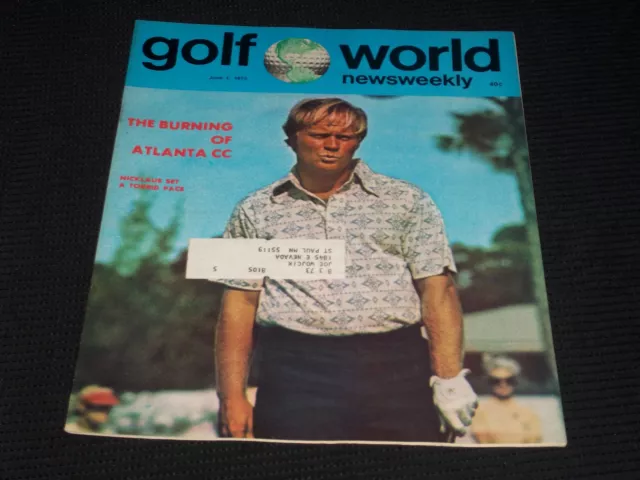
1973 June 1 Golf World Newsweekly Magazine - Jack Nicklaus - E 6124
£23.91 Buy It Now 29d 19h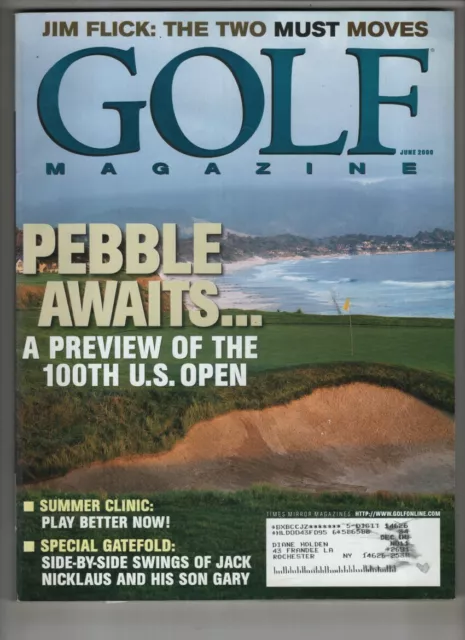
Golf Magazine 100th U.S. Open & Jack Nicklaus & Gary June 2000 081821nonr
£11.13 Buy It Now 22d 4h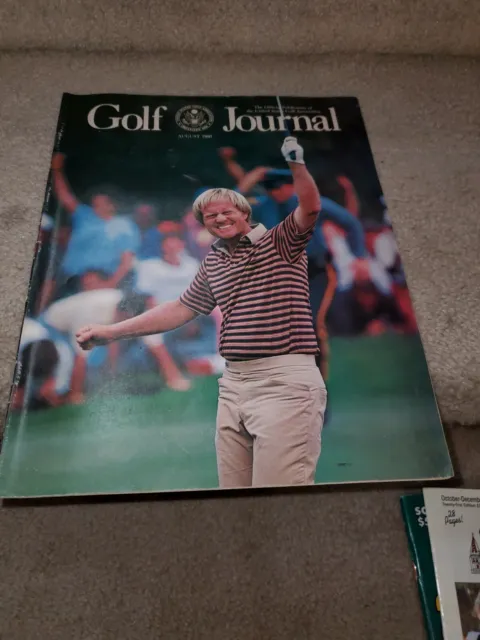
Golf Journal 1980 Jack Nicklaus
£15.93 Buy It Now 30d 6h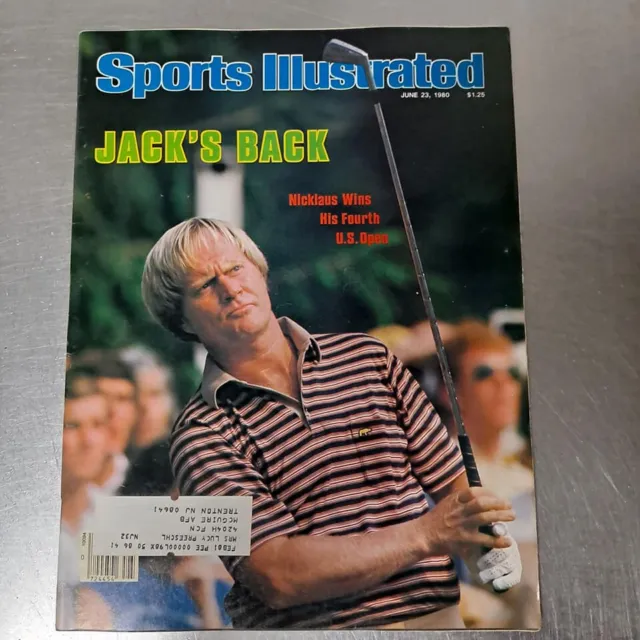
June 23 1980 issue of Sports Illustrated Jack Nicklaus US Open Winner Cover
£7.96 Buy It Now 4d 1h
SPORTS ILLUSTRATED Magazine, JUNE 26, 1972, JACK NICKLAUS Cover Photo, U.S. OPEN
£11.95 Buy It Now 14d 0h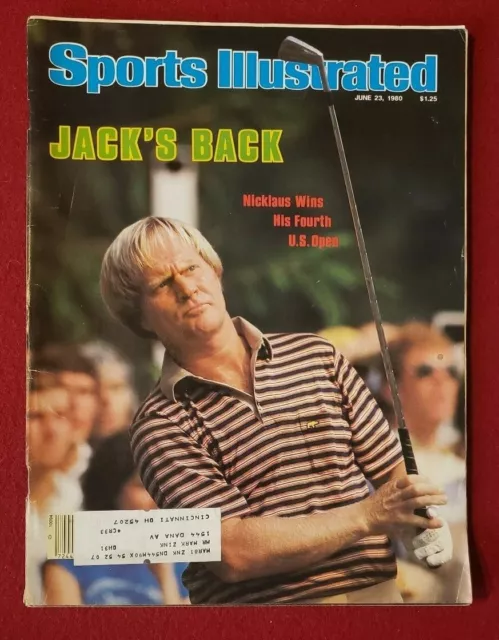
1980 PGA GOLF LEGEND JACK NICKLAUS WINS HIS 4th U.S. OPEN Sports Illustrated
£4.74 Buy It Now 3d 18h
TIGER WOODS 86th MASTERS MAGAZINE, GOLF, PGA, NICKLAUS, PALMER, AUGUSTA
£15.93 Buy It Now 19d 4h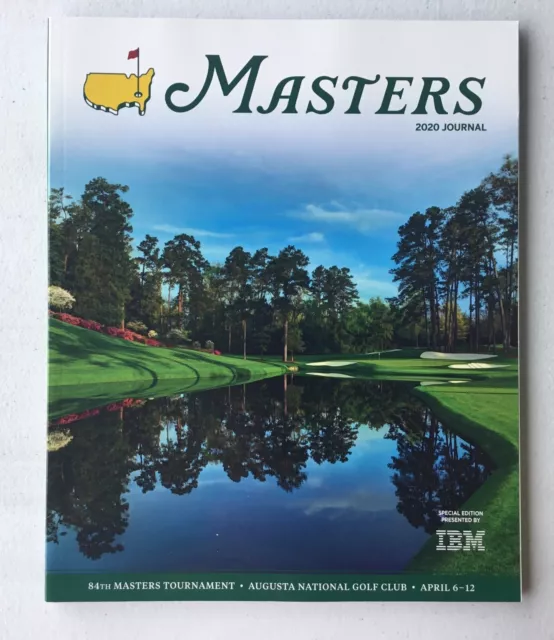
MASTERS 2020 Journal 84th Masters Tournament Augusta GA IBM Special Edition
£13.95 Buy It Now or Best Offer
Golf Journal June 2000 Pebble Beach US Open Championship SEALED BRAND NEW RARE
£39.84 Buy It Now or Best Offer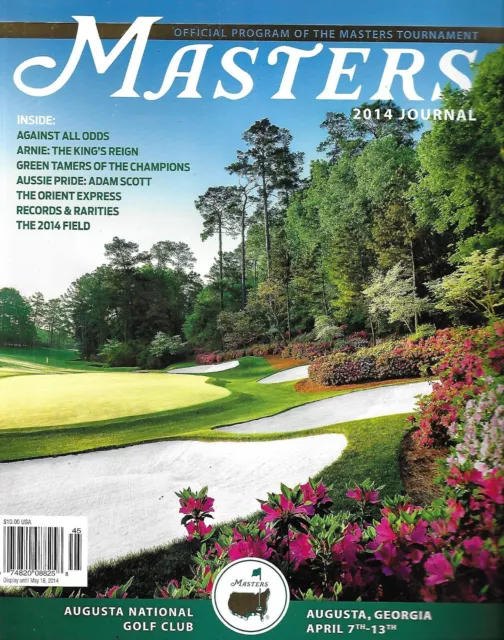
Masters Journal Magazine Best Golf Courses Augusta National Adam Scott 2014
£18.29£16.47 Buy It Now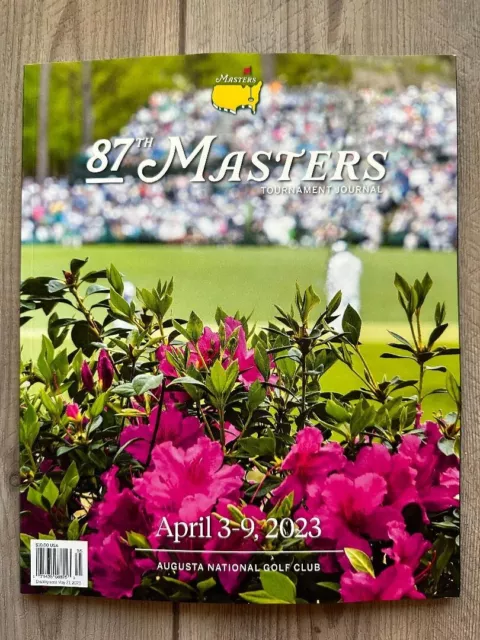 1 watcher
1 watcherApril 3-9 MASTERS 2023 Journal AUGUSTA NATIONAL GOLF CLUB Tournament 87th Master
£9.56 Buy It Now or Best Offer 3 watchers
3 watchersThe Masters Journal 2016 ( The Official Program of the Masters Tournament )
£9.56 Buy It Now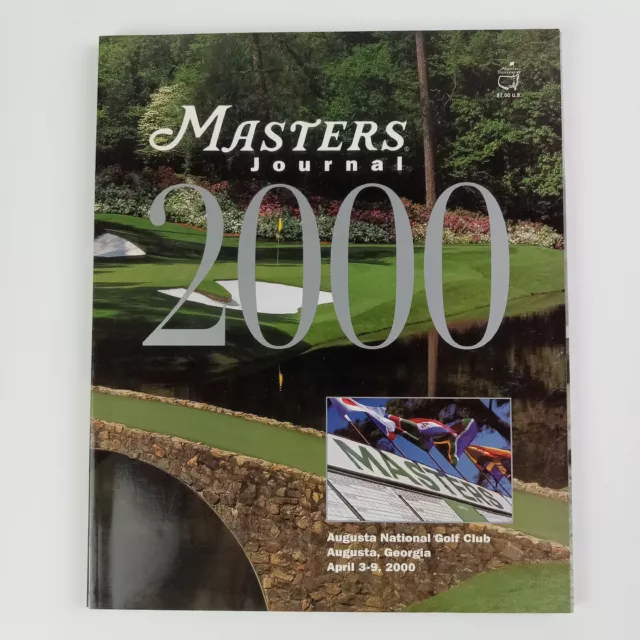
2000 Masters Journal Program Official Guide Augusta National Golf Club Magazine
£6.34 Buy It Now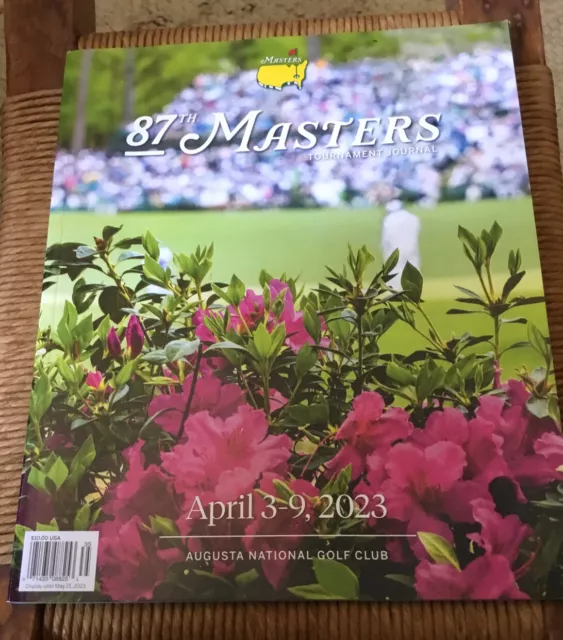
87th MASTERS Journal Magazine AUGUSTA NATIONAL GOLF CLUB Tournament
£4.10 0 Bids 1d 22h 1 watcher
1 watcher87th MASTERS Journal Magazine AUGUSTA NATIONAL GOLF CLUB Tournament 87th Master
£7.96 Buy It Now 1 watcher
1 watcher2 Masters Golf Journals 1995 & 1996 The Official Program of Masters Tournament
£19.92 Buy It Now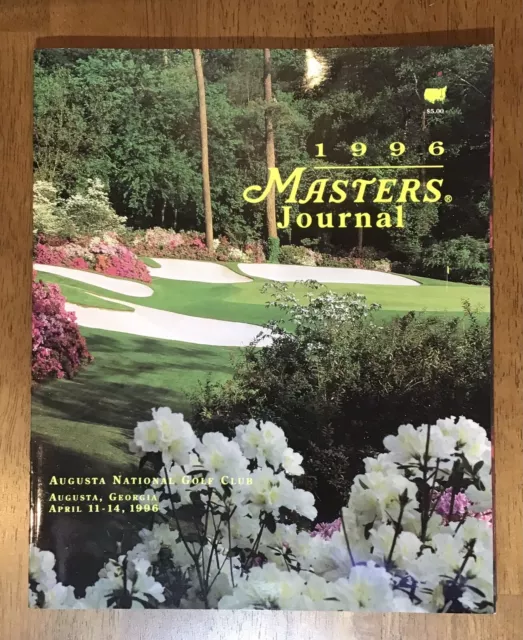
Masters Journal 1996 Official Program of Masters-TIGER AMATEUR-Magazine
£11.96 Buy It Now or Best Offer
2022 Masters Tournament Journal 86th April 4-10 Oficial
£7.96 Buy It Now or Best Offer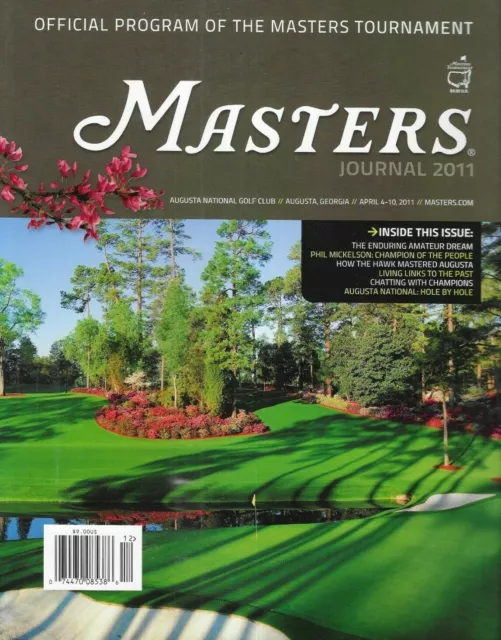 1 watcher
1 watcherMasters Journal Golf Magazine Official Tournament Program Phil Mickelson 2011
£18.29£16.47 Buy It Now
2 Golf Magazines July/Aug2023 Tom Watson & Viktor Hovland. Golf Journal Fall/22
£7.93£4.76 Buy It Now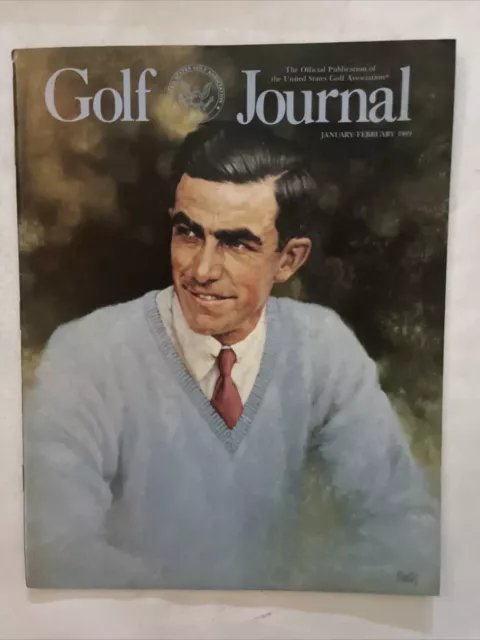
1989 January/February Golf Journal Magazine Golf On The Town (CP259)
£22.31£17.84 Buy It Now or Best Offer
2020 Masters Journal November 9-15 Augusta National Golf Club ~ VG Cond.
£6.37 Buy It Now or Best Offer
Masters Journal 2002 Official Program of Masters-BOBBY JONES- Official Magazine
£7.97 Buy It Now or Best Offer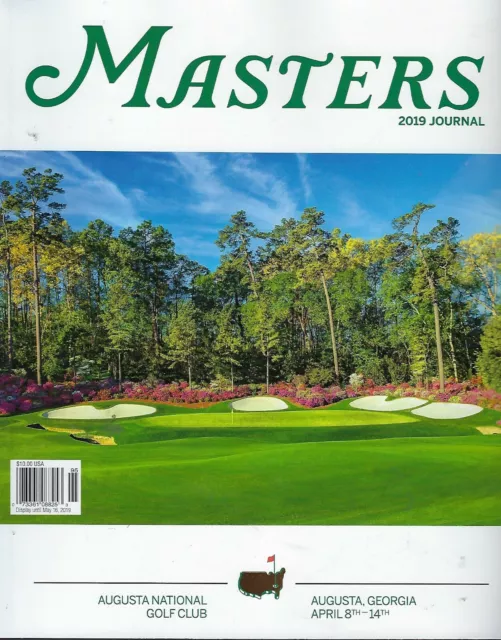 8 watchers
8 watchersThe Masters Journal 2019 ( The Official Program of the Masters Tournament )
£9.56 Buy It Now 5 watchers
5 watchersThe Masters Journal 2020 ( The Official Program of the Masters Tournament )
£9.56 Buy It Now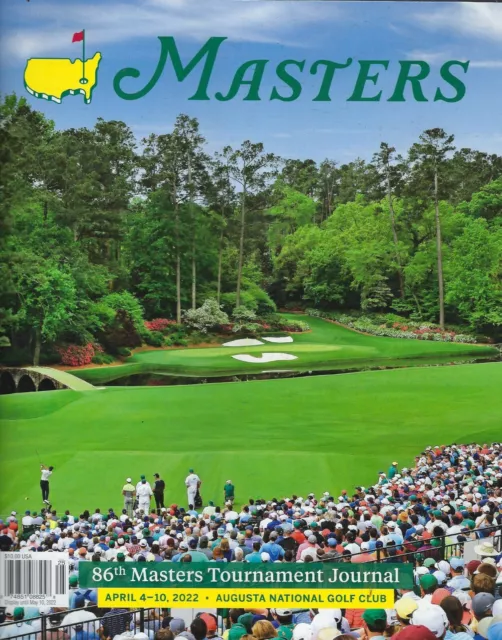 5 watchers
5 watchersThe Masters Journal 2022 ( The Official Program of the Masters Tournament )
£11.15 Buy It Now 6 watchers
6 watchersThe Masters Journal 2021 ( The Official Program of the Masters Tournament )
£10.36 Buy It Now
2002 Masters Journal Magazine: Tiger Woods
£3.99 Buy It Now
Masters Journal Magazine Best Golf Courses Augusta National Perfect Landing
£11.92£10.72 Buy It Now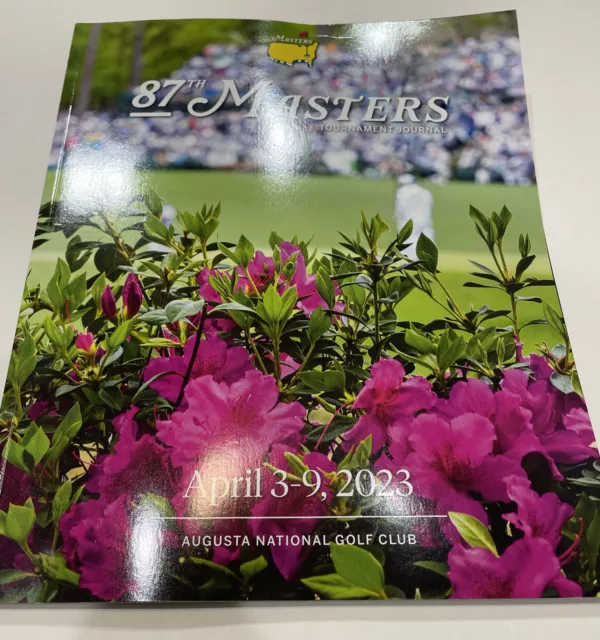 2 watchers
2 watchersThe Masters Journal 2023 87th Masters Brand New from Augusta National
£23.90£21.51 Buy It Now
